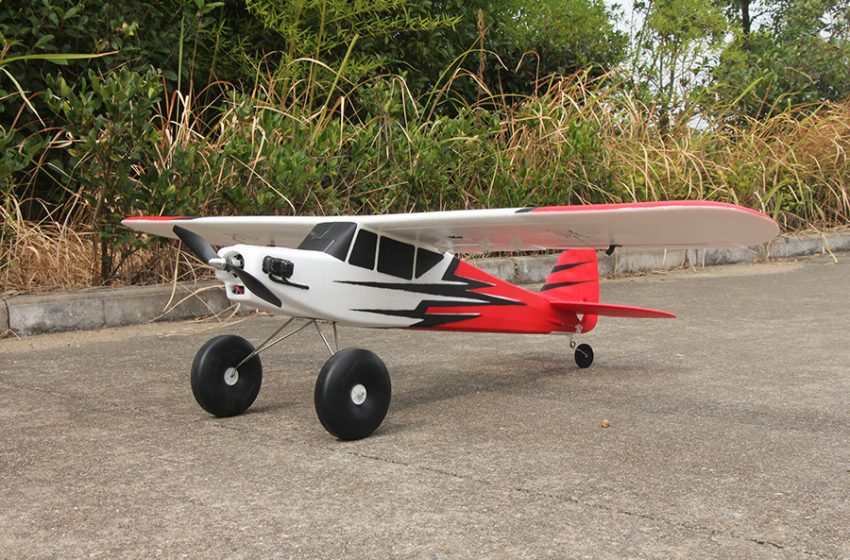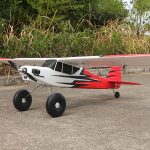RTF RC Planes for Beginners: A Complete Guide to Getting Started

When you’re new to the world of RC (Radio Controlled) planes, it can be overwhelming to know where to start. With so many types, brands, and features available, the journey can feel like a steep learning curve. However, Ready-to-Fly (RTF) RC planes are the perfect entry point for beginners. They offer convenience, ease of use, and an exciting way to enter the world of model aviation.
In this comprehensive guide, we’ll cover everything you need to know about RTF RC planes for beginners, including what to look for, the best planes to start with, and some personal insights from my own experience flying beginner-friendly models like the Dynam Primo RC Beginner Trainer Yellow STOL Bigfoot 4S 1450mm with flaps. By the end, you’ll have a clear idea of what to expect and how to start your RC plane flying adventure.
What Are RTF RC Planes?
Before diving into the specifics, let’s first define what an RTF RC plane is. RTF stands for Ready-to-Fly, meaning the plane comes fully assembled and includes all the necessary components for operation. Essentially, you only need to charge the batteries, install the required control gear (if not pre-installed), and you’re ready to take off.
Key Features of RTF RC Planes:
- Pre-assembled: No building required, making them ideal for beginners.
- Pre-installed electronics: Includes the motor, servos, receiver, and sometimes even a flight controller.
- Easy to use: Designed with simplicity in mind, often with stability features like gyros or safe flight modes.
- Requires minimal setup: Most RTF models only require a bit of battery charging and transmitter setup.
RTF planes are particularly suited for beginners because they remove the complexities of assembly and setup, allowing you to focus purely on learning how to fly.
Why Are RTF RC Planes Perfect for Beginners?
When I first started flying RC planes, I made the mistake of trying to assemble my first plane from scratch. While it was fun, the complexity of building the plane and setting up all the electronics distracted me from learning how to actually fly.
RTF models take all that complexity out of the equation. Here’s why I think they are perfect for beginners:
- No Assembly Required: The plane comes ready to go, so you can spend more time flying and less time building.
- Simplified Setup: The radio system is usually pre-bound to the plane, so once the batteries are charged, you’re almost ready to fly.
- Stability Features: Many beginner RTF planes come with built-in stabilization technology, like gyro stabilization, making them easier to control in flight.
- Durability: Most RTF RC planes for beginners are made of durable foam, which can withstand crashes and rough landings, allowing you to learn without fear of damaging your model.
Key Considerations When Choosing an RTF RC Plane
While there are plenty of options available for beginners, there are a few important factors you should consider when selecting the right RTF RC plane for you.
1. Size and Weight
The size and weight of the plane determine how easily it can be controlled, especially in different weather conditions. Larger planes tend to be more stable, but they can also be harder to control in gusty wind conditions. As a beginner, look for a plane with a wingspan of about 1 meter to 1.5 meters (3 to 5 feet), which strikes a good balance between stability and maneuverability.
2. Power System (Battery and Motor)
The power system is another important consideration. Most beginner planes are powered by electric motors and come with LiPo batteries (Lithium Polymer). When selecting a plane, consider the battery size and flight time. A typical flight time for an RTF RC plane is between 10 to 15 minutes per battery charge.
3. Flight Features
Many RTF planes come equipped with flight stabilizers or even GPS systems to help beginners keep control. Here are a few features that can make your learning experience smoother:
- Gyro Stabilization: Helps keep the plane level and makes it easier to handle.
- Beginner Mode: Some models have a beginner mode that limits the plane’s speed and maneuverability to make learning easier.
- Flaps: Some models, like the Dynam Primo, include flaps that can help with slower, more controlled landings, making it easier for beginners to land safely.
4. Durability
As a beginner, crashes are inevitable. Planes made from EPO foam or EPP foam are ideal because these materials are both lightweight and durable. They can take a beating and keep on flying, which is exactly what you need when you’re learning.
My Experience with the Dynam Primo RC Beginner Trainer
To provide a personal perspective, I’ll share my experience flying the Dynam Primo RC Beginner Trainer Yellow STOL Bigfoot 4S 1450mm with Flaps.
This plane is a fantastic option for beginners due to its STOL (Short Takeoff and Landing) capabilities, allowing for smooth takeoffs and landings in relatively small spaces. The flaps make it even easier to control the speed and approach during landings, which is a huge advantage when you’re still mastering your flight skills.
One of the things I love about the Dynam Primo is its stable flight characteristics. The plane’s design and the included gyro stabilization make it feel very forgiving in the air. I remember the first time I took it out for a flight—it was incredibly easy to keep the plane level, and even when I accidentally overcorrected a turn, the plane gently returned to a stable flight path.
The build quality is also impressive. The foam construction is tough but light, and while I’ve had a few minor crashes (as we all do when learning), the plane has held up well. The 4S battery provides plenty of power for longer flights, and I found that the plane performs well in moderate winds, making it versatile for different flying conditions.
Best RTF RC Planes for Beginners
There are many great RTF RC planes out there. Below are a few models I recommend based on my experience and feedback from other RC hobbyists.
| Model | Wingspan | Key Features | Price Range | Best For |
|---|---|---|---|---|
| Dynam Primo RC Beginner Trainer | 1450mm (57 inches) | STOL, Flaps, Gyro Stabilization, 4S Battery | $$$ | Beginners, Intermediate Pilots |
| E-flite Apprentice 15e | 1.5m (59 inches) | Safe Technology, Durable Build, 3-Channel Control | $$ | Absolute Beginners |
| FMS Cessna 182 1400mm | 1400mm (55 inches) | Realistic Design, Easy to Fly, Gyro Stabilization | $$ | Beginners, Scale Model Enthusiasts |
| Volantex Ranger 600 | 1.2m (47 inches) | Durable, Easy to Assemble, Stable Flight | $ | Beginners on a Budget |
FAQ About RTF RC Planes for Beginners
Q1: How long does it take to learn to fly an RTF RC plane?
- A1: It typically takes a few weeks to a couple of months to become proficient in flying an RTF RC plane, depending on how often you practice and your natural ability to pick up new skills. It’s a good idea to start with a trainer model and fly in calm weather conditions.
Q2: Do I need a flight simulator before flying a real plane?
- A2: While not required, using a flight simulator can greatly speed up your learning process. It helps you understand the basics of controlling an RC plane, including pitch, roll, and yaw, without the risk of crashing a real plane.
Q3: What should I do if I crash my RTF RC plane?
- A3: First, assess the damage. Most beginner planes are made of durable foam that can be repaired with simple adhesive or tape. If there’s significant damage, check the electronics and replace any damaged parts. Many RTF planes also come with spare parts in the kit.
Conclusion: Getting Started with RTF RC Planes
RTF RC planes provide an excellent way for beginners to get into the exciting world of model aviation. With their simple setup, durable design, and forgiving flight characteristics, they offer a fantastic learning experience. Whether you’re flying the Dynam Primo RC Beginner Trainer or another beginner-friendly model, the key is to enjoy the learning process. Remember to start slow, practice regularly, and, most importantly, have fun with your flights.
As you progress, you’ll gain the confidence to explore more advanced models and techniques. Before you know it, you’ll be soaring through the skies like a seasoned pro.


